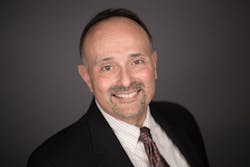FDA approves first generic nasal spray to reverse opioid overdoses
Editor's note: This article originally appeared in Breakthrough Clinical, a clinical specialties newsletter from Dental Economics and DentistryIQ.
To raise awareness that opioid deaths are preventable if they are recognized and treated in time with a lifesaving, overdose-reversing drug, the US surgeon general issued a rare public health advisory in April 2018 advising more members of the American public to learn to use—and to carry—naloxone.
The numbers alone tell a devastating tale.
- Every day, 130 people in the US die due to an overdose of opioid medications—a class of drugs that includes both prescription pain relievers and also illicit or “street drugs” (heroin and illicitly manufactured and distributed fentanyl, which is 50 to 100 times more powerful than morphine). (1)
- Between July 2016 and September 2017, the rate of opioid overdoses reported in 52 areas of 45 states increased by 30%, according to the Centers for Disease Control and Prevention. (2)
- A research letter published in the Journal of the American Medical Association in late 2017 revealed the bottom line: in a span of just 15 years, between 2000 and 2015, deaths due to opioid overdoses more than doubled. This lowered the overall life expectancy of Americans by 0.28 years, “similar in magnitude to losses from all the leading causes of death with increasing death rates during this period combined.” (3)
What is dentistry’s role in the opioid crisis?
According to a study published in the Journal of the American Dental Association in April 2018, (4) while dentists were credited with writing 6.4% of all opioid prescriptions in the US in 2012, the authors sought to use claims data to determine the most recent prescribing trends. The results?
“Among a population of dental patients with private insurance, opioid prescribing rates in the United States increased slightly from 2010 to 2015. The largest increase was among 11- through 18-year-olds. Almost one-third of opioid prescriptions written by dentists were associated with nonsurgical dental visits.” (4)
The overdose-reversing drug naloxone rapidly binds with opioid receptors in an emergency, restoring regular breathing in a person who has overdosed until first responders can arrive and take over medical care. Until recently, the most easily used form of naloxone, Narcan nasal spray, was available only in brand-name form. That changed on April 19, 2019, with an announcement that the US Food and Drug Administration had granted final approval for the first generic form of the drug for use in the community setting.
The reason? Brand-name Narcan nasal spray is expensive. Without insurance or discounts, Narcan can run $150 a dose. Urging Americans to carry a pricey prescription “just in case” somebody may need it someday in a crisis is a tough sell. The new generic naloxone nasal spray will cost considerably less.
In its announcement of the approval of generic naloxone nasal spray, the FDA “has also taken the unprecedented step of helping to assist manufacturers to pursue approval of an over-the-counter naloxone product and is exploring other ways to increase the availability of naloxone products intended for use in the community, including whether naloxone should be co-prescribed with all or some opioid prescriptions to reduce the risk of overdose death.” (5)
References
1. Misuse of prescription drugs. National Institute on Drug Abuse website. https://www.drugabuse.gov/publications/research-reports/misuse-prescription-drugs. Updated December 2018. Accessed April 22, 2019.
2. Opioid overdose crisis. National Institute on Drug Abuse website. https://www.drugabuse.gov/drugs-abuse/opioids/opioid-overdose-crisis#ten. Updated January 2019. Accessed April 22, 2019.
3. Dowell D, Arias E, Kochanek K, et al. Contribution of opioid-involved poisoning to the change in life expectancy in the United States, 2000-2015. JAMA. 2017;318(11):1065-1067. doi:10.1001/jama.2017.9308.
4. Gupta N, Vujicic M, Blatz A. Opioid prescribing practices from 2010 through 2015 among dentists in the United States. J Am Dent Assoc. 2018;149(4):237-245.e6. doi:https://doi.org/10.1016/j.adaj.2018.01.005.
5. FDA approves first generic naloxone nasal spray to treat opioid overdose. US Food and Drug Administration website. https://www.fda.gov/news-events/press-announcements/fda-approves-first-generic-naloxone-nasal-spray-treat-opioid-overdose. Published April 19, 2019. Accessed April 22, 2019.
Editor's note: This article originally appeared in Breakthrough Clinical, a clinical specialties newsletter from Dental Economics and DentistryIQ.
Keep reading more on this subject
- ‘Got DEA number? I want drugs’
- Fighting the epidemic: My experience with an opioid-free practice
- Facts and figures behind the opioid epidemic: 3 clinical methods to alleviate pain and decrease the need for opiates
- Dental pain: Predicting postoperative pain prior to the procedure
- The new street drugs some of your patients may be using that you have never heard of
About the Author
Thomas A. Viola, RPh, CCP
Thomas A. Viola, RPh, CCP, the founder of “Pharmacology Declassified,” is a board-certified pharmacist who also serves the professions of dentistry as a clinical educator, professional speaker, and published author. He is a member of the faculty of 16 dental professional degree programs and has presented hundreds of continuing education courses to dental professionals, both nationally and internationally, in the areas of oral pharmacology and local anesthesia. Contact him at [email protected] or through his website, tomviola.com.


